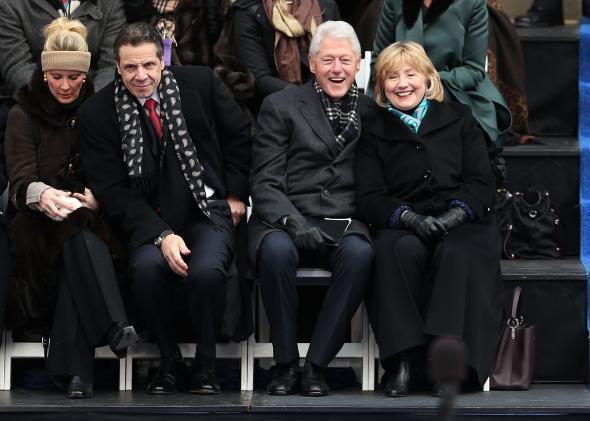Speaking to The New Yorker’s David Remnick, Barack Obama offered the theory that the GOP is poised to moderate itself after another electoral loss somewhat in the way the Democratic Party did under Bill Clinton. Brian Beutler offers some good reasons to be skeptical about this idea, and since I recently read Hans Noel’s new book Political Parties and Political Ideologies in America, I think I agree with him.
Noel essentially assembled a database of opinions expressed by political pundits and public intellectuals in major publications to extend a lot of the quantitative work that’s happened on polarization and partisanship in congress and state legislatures. What he shows is that the history of ideological polarization among writers is interestingly different from the history of polarized voting behavior.
Go back to the start of the 20th century and you see very polarized voting in Congress. But if you look at writers, people are all over the map. He interprets this as saying that there weren’t big coherent overarching ideologies at the time. Instead, party leaders were producing polarized voting patterns in Congress through a mixture of discipline and agenda control in order to advance essentially non-ideological agendas. By the 1950s and 1960s, however, the writers are in organized blocs. The people who favor government intervention in the economy are also likely to favor tough civil rights laws and also likely to be skeptical about the Cold War and also likely to look favorably on the idea of liberalizing abortion laws. On the other side, you had pundits who emphasized the importance of religion and the traditional family and were also enthusiastic about taking an aggressive posture against godless communism abroad and also for fighting for free markets at home and who also tended to see civil rights demands as representing yet another form of federal government overreach and meddling. In other words, by the mid-20th century you have liberalism versus conservatism. But you don’t see that polarization in Congress. Instead, members are cross-pressured with their votes sometimes driven by considerations of ideology and sometimes driven by considerations of partisanship.
Across the subsequent decades, however, ideology-infused party activists start re-aligning the parties along ideological lines. The Democrats become the consistently more-feminist, more-dovish, more-attuned-to-racial-minorities, less-religious party as well as the more economically interventionist one. The Republicans do the opposite. And you get today’s political standoff. As polarized in Congress as the politics of a century ago, but with the parties stitched together by ideological activists rather than networks of non-ideological party regulars.
Bringing this back around to where we started, a huge problem with analogizing anything today to the Democratic Leadership Council’s initiatives in the 1980s is that Clinton rose to prominence at a time when the parties were far less organized than they are today. Democrats’ presidential nominees in 1984 and 1988 were perceived by many party actors as excessively liberal in part because the Democratic Party circa 1990 as it existed in Congress and state legislatures around the country was much more ideologically diverse than the Democratic Party of 2014, to say nothing of the GOP of 2014. The move “to the center” didn’t involve taking a whole bunch of very liberal elected officials and asking them to change their views. It involved asking the party to nominate one of its large number of less-liberal-than-Dukakis elected officials as president. Todays parties aren’t in flux in the same way. Which isn’t to say that the parties won’t or can’t change. But the change would have to be more fundamental. The thinkers and popularizers who shape the meaning of conservative ideology would have to decide that they want that ideology to mean something different.
